
Gerrit Parmele Judd was an American physician and missionary to the Kingdom of Hawaii who later renounced his American citizenship and became a trusted advisor and cabinet minister to King Kamehameha III.

Kalākaua, sometimes called The Merrie Monarch, was the last king and penultimate monarch of the Kingdom of Hawaiʻi, reigning from February 12, 1874, until his death in 1891. Succeeding Lunalilo, he was elected to the vacant throne of Hawaiʻi against Queen Emma. Kalākaua had a convivial personality and enjoyed entertaining guests with his singing and ukulele playing. At his coronation and his birthday jubilee, the hula, which had hitherto been banned in public in the kingdom, became a celebration of Hawaiian culture.

Lunalilo was the sixth monarch of the Kingdom of Hawaii from his election on January 8, 1873, until his death a year later.

ʻIolani Barracks, or hale koa in Hawaiian, was built in 1870, designed by the architect Theodore Heuck, under the direction of King Lot Kapuaiwa. Located directly adjacent to ʻIolani Palace in downtown Honolulu, it housed about 80 members of the monarch's Royal Guard until the overthrow of the Monarchy in 1893. It was added to the National Register of Historic Places in 1978 as part of the Hawaii Capital Historic District.

William Pitt Leleiohoku II, born Kalahoʻolewa, was a prince of the Hawaiian Kingdom and member of the reigning House of Kalākaua.

Colonel Curtis Piʻehu Iaukea served as a court official, army officer and diplomat of the Kingdom of Hawaii. He later became an influential official for the subsequent regimes of the Provisional Government and the Republic and the Territory of Hawaii.

Luther Aholo was a politician who served many political posts in the Kingdom of Hawaii. He served multiple terms as a legislator from Maui and Minister of the Interior from 1886 to 1887. Considered one of the leading Hawaiian politicians of his generation, his skills as an orator were compared to those of the Ancient Greek statesman Solon.

John Mākini Kapena was a politician, diplomat and newspaper editor who served many political roles in the Kingdom of Hawaii. He served as Governor of Maui from 1874 to 1876, Minister of Finance from 1876 to 1878 and again from 1883 to 1886, Minister of Foreign Affairs from 1878 to 1880, Postmaster General from 1881 to 1883 and Collector General of Customs from 1886 to 1887. From 1874 to 1875, he accompanied King Kalākaua on his state visit to the United States to negotiate the Reciprocity Treaty of 1875. In 1882, he traveled to Tokyo as Envoy Extraordinary and Minister Plenipotentiary to the Court of Japan to negotiate Japanese immigration to Hawaii.

John Tamatoa Baker, also given as John Timoteo Baker, was a Hawaiian politician, businessman, and rancher who served many political posts in the Kingdom of Hawaii, including Governor of the Island of Hawaii from 1892 to 1893. Baker and his brother became the models for the Kamehameha Statues.

The Lunalilo Mausoleum is the final resting place of Hawaii's sixth monarch King Lunalilo and his father Charles Kanaʻina on the ground of the Kawaiahaʻo Church, in Downtown Honolulu on the Hawaiian Island of Oʻahu.

Paul Nahaolelua was a Hawaiian high chief who served many political posts in the Kingdom of Hawaii, including Governor of Maui from 1852 to 1874. In his long political career, Nahaolelua served under the reigns of five monarchs: Kamehameha III, Kamehameha IV and Kamehameha V, Lunalilo and Kalākaua.
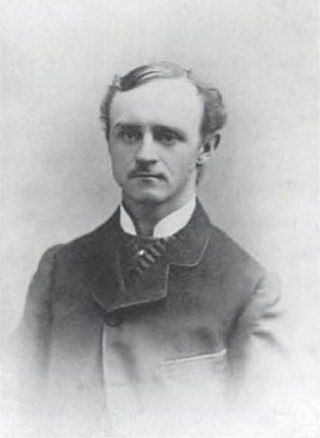
Arthur Porter Peterson was a lawyer and politician of the Kingdom of Hawaii. He served two separate terms as Attorney General of Hawaii and was a member of Queen Liliuokalani's last cabinet before the Overthrow of the Kingdom of Hawaii. He was arrested and jailed by the Republic of Hawaii in the aftermath of the 1895 Counter-Revolution and then exiled to San Francisco where he died of pneumonia.
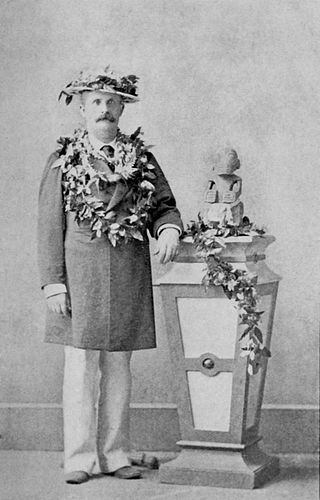
William Nevins Armstrong, aka Nevins Armstrong and aka W. N. Armstrong, was the Attorney General of Hawaii during the reign of King David Kalākaua. He is most widely known outside of Hawaii for the book Around the World with a King, his insider account of Kalākaua's 1881 world tour.
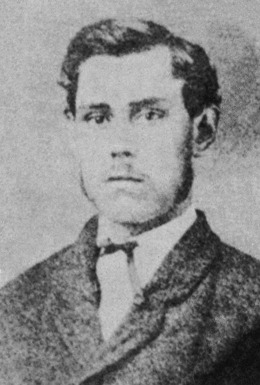
Edward Creamor Macfarlane, also known as Ned Macfarlane, was a politician of the Kingdom of Hawaii. He served as Minister of Finance during the reign of Queen Liliuokalani, and was one of her trusted political advisors during the Overthrow of the Kingdom of Hawaii.

George Walter Hunter Macfarlane was a British businessman, courtier and politician of the Kingdom of Hawaii. He served Colonel of the military staff of King Kalākaua, traveling with the monarch on his 1881 world tour. He also served as his final chamberlain of king and was at his deathbed in 1891.

Robert Napuʻuako Boyd was a Native Hawaiian insurgent leader during the latter years of the Kingdom of Hawaii. Educated under the government-funded study program of King Kalākaua, he attended the Royal Naval Academy at Livorno in Italy. He became a friend of Robert William Wilcox, another Hawaiian student enrolled at Turin. They were both recalled back in Hawaii after the government stopped funding their education. Back home, he participated with Wilcox in the unsuccessful Wilcox rebellion of 1889 aimed at restoring political power to the king.

Kalākaua, the last king of Hawaii, died on January 20, 1891, while visiting in California. President Benjamin Harrison ordered the United States Navy and United States Army to conduct a state funeral in San Francisco. The funeral attracted an estimated 100,000 spectators who lined the streets to watch the cortege pass. When the United States military escorted his body back to Honolulu, no one knew Kalākaua had died. The homecoming celebration that Honolulu had been planning for their monarch was replaced by funeral preparations. He received a second state funeral in the throne room of Iolani Palace, entirely in the Hawaiian language, and was laid to rest at the Royal Mausoleum of Hawaii. News reports stated that the Honolulu funeral cortege was so massive it took 75 minutes for its entirety to pass any given point.

Following the January 20, 1891 death of King Kalākaua in San Francisco, his embalmed body arrived at Honolulu Harbor aboard the USS Charleston, draped in black with its ensigns at half mast. His sister Liliʻuokalani was designated his successor.
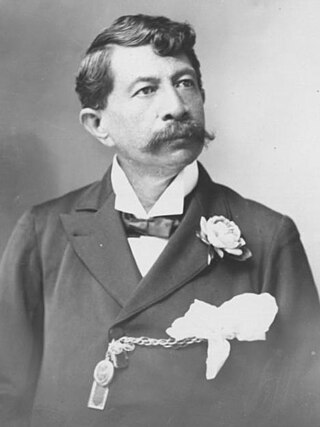
Edward Kamakau Lilikalani was a political protégé of King Kalākaua of Hawaiʻi. He served more than a decade in the lower house of the Legislature of the Hawaiian Kingdom, and after nearly two decades out of office, was elected to the same legislative body under the Territory of Hawaii. Lilikalani was a member of both Kalākaua's Privy Council of State and Liliʻuokalani's Privy Council of State. Kalākaua decorated him with the Royal Order of Oceania, Order of Oceania, Order of Kalakaua, and Order of Kapiolani.
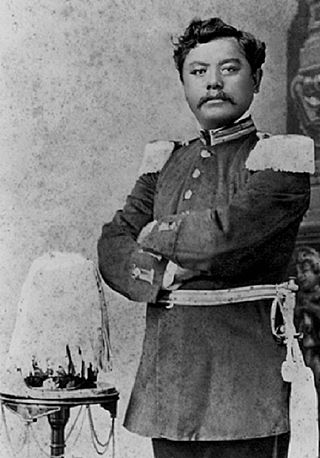
David Leleo Kinimaka was a descendant of Hawaiian nobility and the hānai (adopted) brother to King Kalākaua. Kinimaka was a member of the Royal Guards of Hawaii during the reigns of Kamehameha V and Lunalilo until the 1873 mutiny at ʻIolani Barracks. He later became a member of Kalākaua's Privy Council of State and a commissioned officer in his King's Guards. In 2013, hundreds of his descendants from around the world gathered at Iolani Palace for a family reunion.





















